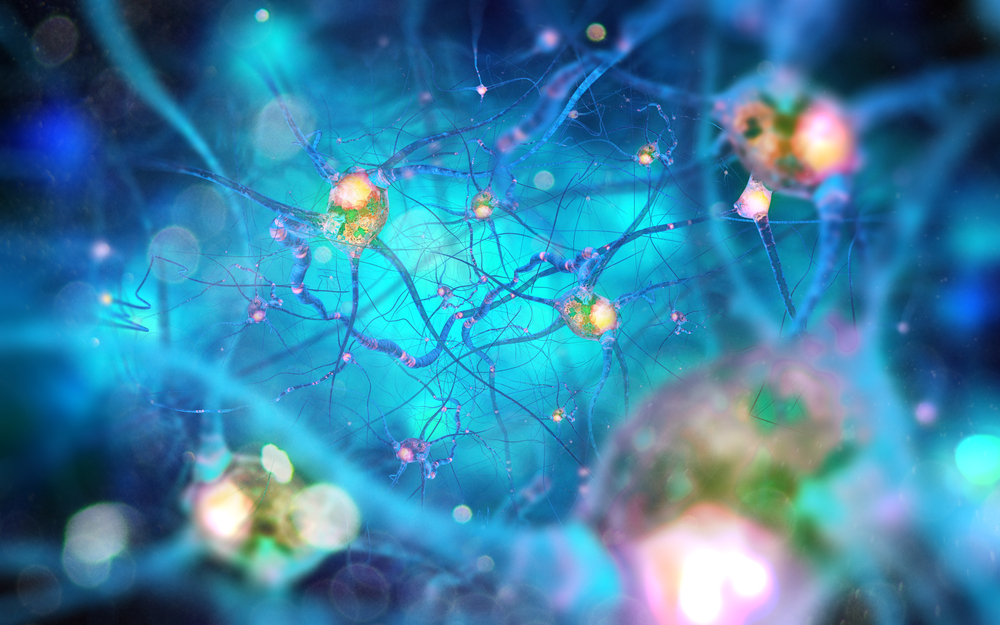Neurons, Not Nearby Cells, Decide Dopamine Levels, Study Reports

Andrii Vodolazhskyi/Shutterstock
Dopamine-releasing cells in the brain, much like most other hormone-producing cells, have a self-regulating feedback mechanism that controls their activity, researchers have discovered.
That is, healthy nerve cells themselves determine how much dopamine will be released, the research team found, in contrast with the prevailing view that nearby cells “control” neurons by regulating dopamine’s release. This discovery may help in better understanding and treating Parkinson’s disease, which is caused by the loss of dopamine-making nerve cells in the brain.
The findings are in the study “Activity-dependent somatodendritic dopamine release in the substantia nigra autoinhibits the releasing neuron,” published in Cell Reports.
The brain and the rest of the nervous system contain billions of neurons — specialized nerve cells that can send electrical signals. An electrical current can run from one side of a neuron to the other, which prompts the neuron to release signaling molecules called neurotransmitters. These neurotransmitters, in turn, trigger the electrical activity of other neurons.
The sum of this electrical and chemical signaling gives rise to all of the activities of the brain, like coordinating movement, emotion, and consciousness.
Neuronal activity, including both electrical signaling and the release of neurotransmitters, is governed by a complex system of biological processes that scientists are still working to fully understand. It is hoped that a better understanding of these processes could help in determining the best way of treating when something goes wrong, like in Parkinson’s disease.
Dopamine-producing cells in the brain are known to express a protein receptor called D2. Put simply, D2 binds to dopamine, and this signals the cell to be less active. Conceptually, this feedback mechanism prevents too much dopamine from being released at any one time.
Part of this system, however, has been unclear: where does the dopamine that activates D2 receptors come from?
The prevailing view has been that the D2 receptor on a given neuron is activated by dopamine released by that neuron’s neighbors, rather than by the neuron itself.
This study, by a team led by researchers at NYU Grossman School of Medicine, provide evidence that contradicts this theory.
The researchers used a series of novel cellular models in which neuronal activity could be manipulated, and D2 signaling assessed. This work included the use of specialized antibodies, as well as injecting cells with botulinum toxin (a bacterial toxin that is well-known as the active agent in Botox) to prevent the release of dopamine.
These systems allowed the researchers to trigger a single neuron to release dopamine, or to block the release of dopamine from a single neuron. This resulted in increases and decreases, respectively, in D2 signaling, supporting their view that D2 signaling is in response to dopamine released by neurons themselves, not by their neighbors.
“We report that a [dopamine-producing] neuron is regulated primarily by its own [dopamine] release, rather than by [dopamine] release from its neighbors,” the researchers wrote.
“Our findings provide the first evidence that dopamine neurons regulate themselves in the brain,” Takuya Hikima, PhD, an instructor of neurosurgery at NYU Langone Health and the study’s lead author, said in a press release.
“Now that we better understand how these cells behave when they are healthy, we can start to unravel why they break down in neurodegenerative disorders like Parkinson’s disease,” Hikima added.
Beyond dopamine-releasing neurons specifically, the researchers are hopeful that their new cell models could aid in other studies of brain function.
“Since our Botox technique helped us solve the problem of how dopamine neurons regulate their communication, it should also enable us to uncover how other nerve cells interact with each other in the mammalian brain,” said Margaret E. Rice, PhD, a professor at NYU Langone and the study’s senior author.






